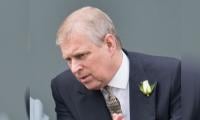China pledges more stimulus in 2019 as economy seeks bottom
BEIJING: China’s top policymakers confirmed that more monetary and fiscal support will be rolled out in 2019, as the world’s second-largest economy grapples with a slowdown that’s yet to show signs of ending, Bloomberg reported.
“Significant” cuts to taxes and fees will be enacted in 2019 and while monetary policy will remain “prudent,” officials will strike an “appropriate” balance between tightening and loosening, according to a statement published after the annual Economic Work Conference that concluded in Beijing Friday.
The statement signals that China is ratcheting up the limited, targeted stimulus approach used during 2018, though still stopping short of the all-out support that would pressure the currency and hobble efforts to contain debt. Facing the most difficult economic environment in years amid the trade standoff with the U.S., the conference outcome suggests Beijing sees increasing urgency in tackling stalling growth.“The focus for macro policy has shifted from lowering long-term risks to boosting short-term demand,” said Larry Hu, head of China economics at Macquarie Securities Ltd.
The stimulus pledge did little to convince investors, who have seen nearly $3 trillion wiped off the value of China’s stock market since the end of January. The Australian dollar, a proxy for betting on China due to the country’s trade exposure to the Asian economy, fell against the dollar along with most major currencies. The economy slowed again in November as retail sales and industrial production weakened. Economists see growth of the world’s second-largest economy slowing to 6.2 percent next year from 6.6 percent in 2018, as uncertainty over the trade war couples with a decline in consumer confidence to dim the outlook.
For monetary policy, the dropping of a “neutral” tag brings the official stance more in line with the People’s Bank of China’s activities this year, which have focused on channeling extra liquidity to specific parts of the economy. This week the central bank said it would supply lower-cost liquidity for as long as three years to banks willing to lend more to smaller companies
Economists expect central bank support to involve another 200 basis points of reductions to the required reserve ratio for major banks, though most don’t currently forecast a cut to the benchmark 1-year lending rate. Tax cuts are also in the pipeline, following on from 2018’s reductions in personal income tax. Extra government spending likely will result in a higher budget deficit target, though specific details aren’t likely to be released before a meeting of the nation’s legislature in March.
Policy makers stressed the need for “investment to play a key role” in upgrading manufacturing, 5G technology, artificial intelligence and industrial Internet capacities. “We continue to believe the easing will be measured, with a combination of economy-wide easing and targeted measures. The focus will be on unclogging lending channels, rather than flooding the system with liquidity.”
“Property control,” a phrase indicating purchase or sales restrictions in the housing market, was omitted from the statement for the first time since 2015. China’s new home prices peaked in 2016.
In 2017, the Work Conference laid out a three-year approach to winning “critical battles” against financial risk, pollution and poverty. In the grip of the trade war this year and a sharper-than-expected contraction of unofficial funding channels, the leverage campaign has been softened.
PBOC Ratchets Up Monetary Support With ‘Low-Profile’ Rate Cut
This year, amid the ongoing trade confrontation with the U.S., policy makers committed to implementing the agreement made with the Trump administration in Argentina. Officials will push for the diversification of export markets and reduce the administrative costs on imports, according to the statement.
The “three critical battles” have achieved initial success and efforts should be made in "playing the key battles and addressing prominent problems next year", the statement said, indicating not all the parts will be top of the agenda in 2019. On preventing financial risks, officials said that "cutting the leverage ratio structurally" will be the basic approach, and policy makers should work to prevent abnormal fluctuations in financial markets, managing local government debt in a "firm, controllable, orderly and moderate" manner.
The stress on structural deleveraging and moderate debt management contrasts with the harsh language used last year, when preventing financial risks was the "key" in the battle against major risks, suggesting efforts to clean up the sector could be watered down in 2019.
The government also pledged to protect foreign companies’ legal rights in China, especially on intellectual property, and will allow sole ownership in more sectors -- addressing a topic that’s been a source of U.S. concerns.
While the Made-in-China 2025 plan wasn’t mentioned in the statement, high-quality development of manufacturing sector was listed as the first task for next year among a total of seven, replacing supply-side reform at the top post from the previous year. China should "firmly" push the strategy of strengthening the nation’s manufacturing, and step up the innovation ability of manufacturing sector, the statement said.
“Policy makers see the Chinese economy facing bigger downward pressures and an increasingly challenging external environment,” said Wang Tao, head of China economic research at UBS Group AG in Hong Kong. “As a response, the work conference sent more and more specific easing signals, and said they want to push harder on reforms and supporting the private sector.”
-
 Ben Affleck Doesn't Want His Kids To Join Showbiz: Here's Why
Ben Affleck Doesn't Want His Kids To Join Showbiz: Here's Why -
 George R.R. Martin Calls 'House Of The Dragon' S3 'not My Story'
George R.R. Martin Calls 'House Of The Dragon' S3 'not My Story' -
 Kim Kardashian Gushes Over 'baby Girl' Chicago As She Turns 8
Kim Kardashian Gushes Over 'baby Girl' Chicago As She Turns 8 -
 Drew Barrymore Reflects Heartbreaking Body Shaming She Faced At Just 10
Drew Barrymore Reflects Heartbreaking Body Shaming She Faced At Just 10 -
 Pamela Anderson Felt 'weird' Seeing Seth Rogen After 'Pam & Tommy'
Pamela Anderson Felt 'weird' Seeing Seth Rogen After 'Pam & Tommy' -
 Kelly Clarkson Discovers A Shark Named In Her Honour
Kelly Clarkson Discovers A Shark Named In Her Honour -
 HBO Mulls Major 'Game Of Thrones' Spin-off Focusing On A Stark
HBO Mulls Major 'Game Of Thrones' Spin-off Focusing On A Stark -
 Ashton Kutcher Says He's Proud Of Demi Moore
Ashton Kutcher Says He's Proud Of Demi Moore -
 Why Prince William, Kate Hired A Crisis Expert Despite Royal 'calm'?
Why Prince William, Kate Hired A Crisis Expert Despite Royal 'calm'? -
 Extent Of Meghan Markle’s Fears Gets The Spotlight: ‘The Press Detest Her Which Is A Problem’
Extent Of Meghan Markle’s Fears Gets The Spotlight: ‘The Press Detest Her Which Is A Problem’ -
 Caitlyn Jenner Finally Reacts To Kylie, Timothee Chalamet Relationship
Caitlyn Jenner Finally Reacts To Kylie, Timothee Chalamet Relationship -
 Prince William’s Beefed Up PR All Set To Fight Off ‘plot’ And ‘it Might Not Be Long’
Prince William’s Beefed Up PR All Set To Fight Off ‘plot’ And ‘it Might Not Be Long’ -
 Kate Middleton Ups A New Role Unofficially For King Charles As William Prepares His Coronation
Kate Middleton Ups A New Role Unofficially For King Charles As William Prepares His Coronation -
 Teyana Taylor Says She Misread Leonardo DiCaprio Globes Moment
Teyana Taylor Says She Misread Leonardo DiCaprio Globes Moment -
 A$AP Rocky Reveals What Encouraged Him To Date Rihanna
A$AP Rocky Reveals What Encouraged Him To Date Rihanna -
 Newborns At Risk: Health Experts Warn Your Baby Could Already Have Diabetes
Newborns At Risk: Health Experts Warn Your Baby Could Already Have Diabetes



